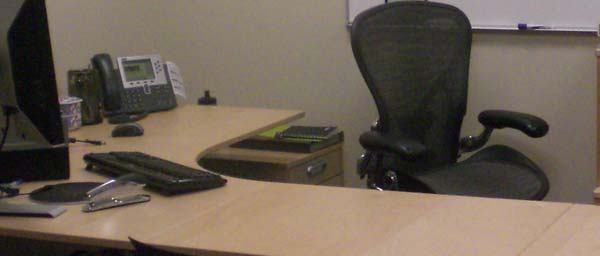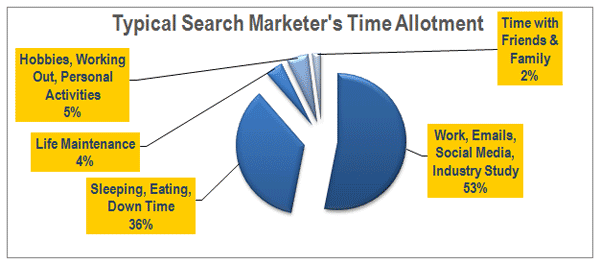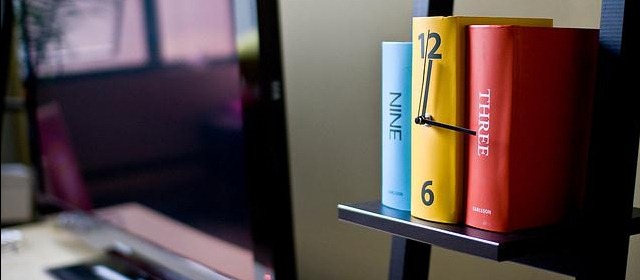HELP!!! I need YOUR help with time management intervention!
“Hi. My name is Dana Lookadoo, and I’m a Productivity Junkie!”
I’m addicted to getting things done, checking things off a list, meeting client needs. The more I accomplish, the more commitments I accept. At times I’m moving so fast that tasks don’t even make it on a list. I’ve spent umpteen years addicted to time and project management systems. I have not achieved the 4-hour work week.
Addiction to productivity has its downsides. One can take on too many commitments (raises hand), and that results in a huge stressed-out imbalance.
 David Allen's "Getting Things Done" (GTD) showed up on my front porch the other day (a thoughtful gift from Lyena Solomon). I salivated at the tagline:
David Allen's "Getting Things Done" (GTD) showed up on my front porch the other day (a thoughtful gift from Lyena Solomon). I salivated at the tagline:
"The Art of Stress-Free Productivity"
"Stress-free productivity" - Is it really possible or simply a way to sell books?
I’m confess that I’m kickin’ out billable hours, highly productive much of the time but suffering in the process. Life feels out-of-balance. I need to buy back time for more personal life goals and passions. More time with family and friends would be a bonus, too! (Maybe I also need to learn to say "no!" more often.) The fast-paced lifestyle is an addiction as well.
You’re probably not too different from me.
- Do you get a thrill from completing tasks?
- Do you constantly feel as if you don’t have enough time?
- Do you sacrifice personal goals to work long hours?
- Does your body suffer from too many hours in front of the computer?
- Do you spend less time with friends and family but know what your friends on Twitter and Facebook are doing?
I’m asking you to help me complete my (our) needed 12-Step Program to buy back time.
How do busy search marketers buy more time each day?
Search marketing and social media go hand-in-hand. Work in this field and just say "no" to M-F, 9-5 days. It feels more like 24/7. We work and live in a rapidly evolving, fast-paced industry. Heck, Google's 450+ algorithm changes each year adds to the speed of daily life.
How do you find balance and time for it all?
We all have a choice of how we spend our days, or do we? I often feel OUT OF CONTROL! Making money is good, yet what I really want is… more time!
You cannot buy more time!
None of us can spend our hard-earned dollars to buy more time. (Sorry, faked you out on the title.) AND, you cannot buy back wasted time. Given hours spent working, keeping up with the industry and social media, many of us need a 12-Step Program to buy back more of our lives each day. If your time allotment looks something similar to the following chart, you need help.
Many of us would prefer to have more personal time, more time with friends and family, and maybe even more sleep.
I'm looking for your YOUR help and input on how YOU get more done in a day. Below are my thoughts on ways to optimize time and productivity, yet I know some areas are lacking. Please help fill in the blanks.
12-Steps to Productivity & Getting Stuff Done
DISCLAIMER #1:
I’ve broken every step below and have not followed every process listed - more often than not.
DISCLAIMER #2:
Time and task management should always follow an evaluation of goals and planning. How you spend your time should be governed by your values, what you want to accomplish, balanced by work demands and needs. (We’ll save the goal-setting/planning aspect for a future post.)
Here is the first draft of the 12-Step Program to Buy Back Time:
- Step away from your “Time Management Diet.”
- Get your $#!+ organized!
- Have regular “quiet” time.
- Do a daily “brain dump.”
- Never say, “I’ll do it later!”
- Read it later!
- Set an appointment to “meet” with your tasks.
- Be single-focused.
- Capture notes and references.
- Never remember a password.
- Empty your email Inbox.
- Ask for help!
Let's unfold each of the proposed steps to getting more time out of each day:
1. Step Away from your “Time Management Diet.”
Stop evaluating every moment you spend as if you were counting calories.
Any rigid time management system is going to feel like a diet, and IT WONT WORK! You won’t keep the weight off. You’ll throw away your Franklin Planner (I did after 15 years) and your iPhone app. (Well, maybe you’ll use that.)
Time management must become a lifestyle. It must fit YOUR style. No system works for everyone, and you can become a slave to it. Don’t waste time fussing over if a task was an A3 or an A4 or if you’re following the GTD process just right.
The goal is to make your 12-step productivity program part of your permanent lifestyle. It must fit you and your unique needs and approach. It may also vary depending on if you are PC or Mac user (or a combination of both).
2. Get your $#!+ organized!
People who want to lose weight need to get rid of the junk food in their house. Healthy food should be the only available choice.
The same applies to productive lifestyles. Begin by clearing out the junk from your work life.
- Organize your office.
Clean up your desk and surrounding workspace. Like someone’s car, the tidiness of one’s office often translates to the state of their mental being - how they are “at home” in their minds. Messy surroundings often equate to disorganized minds.- Get rid of sticky notes! No 3M "To Dos!"
- Put all papers in a folder or an inbox. DO NOT have miscellaneous papers you don’t’ need to touch lying around on your desk.
- Clear off your computer desktop.
YES, that area that has hundreds of icons in rows and columns, making your desktop look like a jig-saw puzzle.- Organize your computer files. Create shortcuts where needed.
- File those desktop icons in their appropriate folder.
- Do not use this desktop as a To-Do List!!
You’ve heard the saying,
“Out of site, out of mind.”
Clean up your desk and your desktop to free up your mind! You can achieve this:

You'll buy back hours by removing clutter and knowing EXACTLY where everything is.
3. Have daily “quiet” time.
Quiet time is different for every person – prayer, meditation, zenning out, no TV, no radio, no Twitter, no Facebook – just you and your thoughts. Bharati Ahuja wrote a post, “Connect To Yourself First then To The Rest Of The World.”
"Once you start the day with this positivity you have already taken the first step to face the day ahead with zeal and energy as more than caffeine. It is the oxygen which is needed early in the morning."
This is YOU time. My quiet time is early - before the distractions of the day officially begin. Daily quiet time can result in your taking back time, being proactive rather than being reactively sucked into non-essential conversations on social media. It's time to be with your thoughts and actually think about the priorities of the day, about life. It maybe the only time your head is not full of hundreds of voices, pop-ups, ringing phones, and notifications.
Planning for daily quiet time could mean you have to wake up 30 minute earlier, but it’s worth it. You’ll buy some peace of mind in the process.
Listen to sage advice by Marie-Claire Jenkins:
“When I focus, I focus. I don't need any tool to help. I think I owe that to yoga and meditation, so maybe they are my most valuable tools :)”
4. Do a daily Brain Dump.
Dump what’s on your brain at AT LEAST once a day - thoughts, needs, tasks, wants, blog ideas, etc. Put them into a system. I don’t care what the system is. It doesn’t have to be an iPhone app and can be paper. Just follow the principle, and get loose ends out of your brain. You must, however, capture the dump and put it somewhere to process it later!
- No matter what you are doing, you have to capture ideas.
- Dump anything you need to remember, know or do something about.
- Everything on your mind creates distraction.
- When everything is on your mind, you’re afraid you’ll forget. The result... you get stressed out.
Do you need to write down every step? No. Write down the next steps, maybe the goals and key items you need to remember.
Your daily brain dump enables you to forget about tasks not immediately on your plate. You can focus and do the immediate need faster. You get more of your time back to do more work faster… and have a personal life!
You may need one system or multiple systems. Lyena showed me how she "dumps" into the appropriate system as she encounters them throughout the day.
- Remember the Milk (for personal lists)
- OmniFocus (for personal tasks based off GTD)
- TeamWorkPM (for client project management)
- ActiveInbox (for email processing).
However you process, your brain dump requires just that - processing AND a system.
This is one area I need input from the 12-Step Support Group as I’m changing “systems.”
- What are you using as your dump repository?
- What if you're a PC user and want to incorporate some of the GTD approach?
5. Never say, “I’ll do it later!”
When a task or need arises, ask:
"Can you do it now"
If so, get it done and don’t bother capturing it anywhere.
If the answer is “no,” then determine where you have to do it and by when.
WHERE:
Context matters. Where do you need to remember to do it? Do you remember when you are near your phone, near your computer, on-the-go. Enter your non-procrastinated task into an app or system that will be with you where you are.
WHEN:
Assigned your task to a future time. Schedule time to work on the tasks. Give it a completion date.
TOOL TIP: Lyena Solomon (Ms. App Queen) uses Boomerang to email tasks and reminders to herself in the future.
How do you make tasks actionable, with a timeline, and then remember to do them – without procrastination?
Ruud Hein shared a time management tip that I’ll make part of my permanent lifestyle based off a book, “Do It Tomorrow:”
Work with closed lists. Instead of adding endlessly to your list, you have only 1 list for today. That's it. New work comes in? It cannot be added on today’s list. It goes on the "Do it tomorrow" list.
So, doing it tomorrow is not procrastinating. Tomorrow is a WHEN you do it!
6. Read it Later.
Yes, LATER! Inevitably, you are going to see an article to which you cannot give full attention at the moment. You'll want to read it later. Use InstaPaper and its “Read Later” bookmark.
This may be one exception when you can “procrastinate” and not assign a date to a task. Simply bookmark.
Read articles later at a scheduled time or when you have a few spare minutes.
7. Set an appointment to “meet” with your task.
Use your calendar. I know, tasks are not supposed to go on a calendar. The calendar should be saved for meetings and things that need to be done at that time and that day. Establishing appointments for accomplishing tasks (and personal goals) are just like scheduled meetings. You give your full attention to that task at that time.
I schedule time such as “Process & Planning” and “Reading” and “Client Work” times. During those appointments, I don’t answer emails or take phone calls or respond or get distracted by social media, chat or IM. I meet with the task at hand.
8.Be single-focused.
Implement a single-focused approach. Do not be married to multiple windows, pop-ups and giving your attention to many things at the same time. (I know, most search marketers have ADD. Sorry, ADD is not effective for productivity junkies!)
If you’re in billable-time mode, give your clients 100% of your attention. When I’m in “client mode,” I only check emails and read those by the client who is paying for that block of time
- Block chunks of your day for single-focused productivity mode.
- Plan water-cooler breaks and schedule social media time to socialize and keep up with what’s going on with friends and latest happenings.
- Schedule time away from the computer with IRLs and give them your full attention. That means putting down your phone and portable device and being "in the moment" with people in real life.
Save up to HOURS each day by focusing on one thing at a time!
9. Capture notes and references.
Evernote captures more than notes, but it's a great place to start for using a tool that serves as a desktop application, Firefox plugin, and iPhone app. Evernote is an online filing system that serves to provide almost instant retrieval of your notes and references. Think of it as your default notebook you can categorize and access from anywhere. Evernote captures:
- Text notes
- Web clippings
- Audio notes
I recently learned you can collaborate and share folders as well! AND it's FREE!
10. Never remember a password.
Dawn Wentzell wrote about "Managing Client Passwords Without Going Crazy."
Avoid the crazies! Save your mental energy by never having to remember a password! Automate logging into multiple accounts each day.
I use RoboForm (shameless affiliate link) as a way to instantly access many accounts every day. RoboForm has an "Everywhere" version that allows you to synch multiple computers and iPhone. Passwords are maintained in a secure file that would be hard to hack. It's freed up countless minutes of accessing a spreadsheet of passwords.
No matter what tool you use to manage passwords, you need to have a secure way of managing them and efficient access.
11. Empty your email Inbox.
"Inbox Zero" is a state of mind I can hardly fathom achieving!! I read the following somewhere:
"Do not let the sun go down on emails in your Inbox."
I definitely need email intervention here. I have 6 email accounts and thousands of unread emails. I succeed in not allowing email to disturb me in focus mode. I wrote about letting go of the emotional control of your inbox and admit struggle. However, I shut down email often for hours. I fail, however, when it comes to scheduling time to process email.
Please tell me I'm not alone in having the deer-in-the-headlights look when staring at email Inboxes.
I don't even have advice to give here other than keeping track of when the sun goes down...
12. Ask for help!
I NEED YOUR HELP!! I’m implementing new processes and a few new and familiar tools to streamline and get more done each day. I realize changing one tool will not make one more productive. A 12-Step Program to Buy Back Time requires a change in lifestyle and not a reliance on any one method or tool. You have to change your relationship with the tools and use tools that fit your lifestyle to get things done.
I'm calling on all Productivity Junkies to HELP!
Please join my 12-Step Support Group by sharing your tools and process for getting things done.




